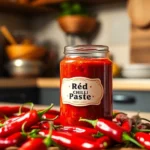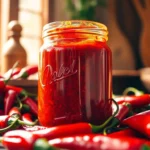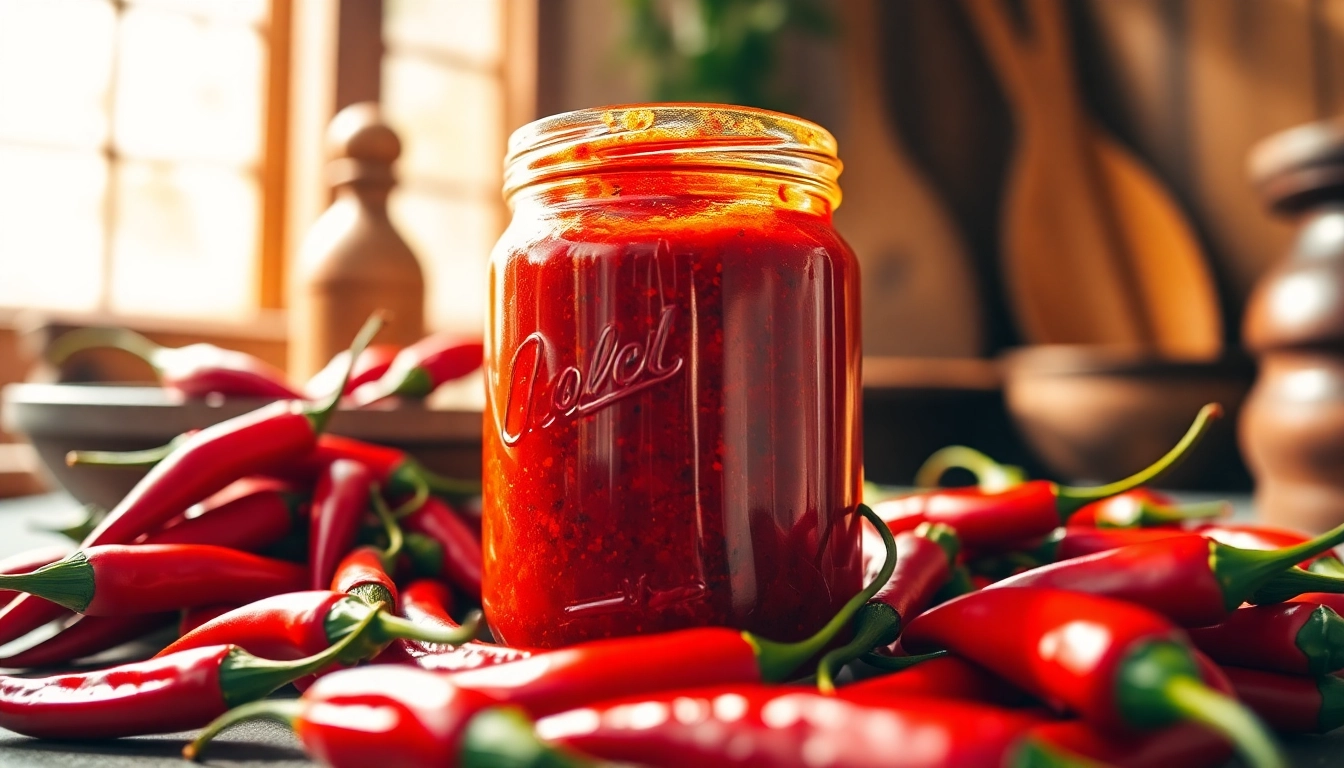Understanding the Significance of Red Chilli Paste in Global Cuisine
Red chilli paste is a cornerstone ingredient in many culinary traditions around the world, offering a vibrant flavor, fiery heat, and rich color that elevates a multitude of dishes. Its origins trace back centuries, where it was traditionally crafted by grinding sun-dried chillies with other spices using mortar and pestle, often resulting in a robust and authentic flavor profile. Today, the demand for high-quality red chilli paste has surged globally, driven by the increasing popularity of spicy cuisine, health-conscious eating, and the convenience of ready-to-use products. As a leading Red Chilli Paste manufacturer and exporter, Spice Nest prides itself on delivering authentic, premium quality products that meet international standards.
Origins and Traditional Uses of Red Chilli Paste
Historically, red chilli paste has been a vital component in culinary regions such as India, Southeast Asia, and Latin America. In Indian cuisine, it forms the base for curries, marinades, and chutneys, while in Thailand and Indonesia, it is essential for preparing flavorful sambals and spice pastes. Its traditional preparation involves sun-drying chillies and blending them with ingredients like garlic, salt, and vinegar, which not only enhances preservation but also intensifies flavors. The paste serves as a quick flavor booster, allowing cooks to add depth and heat to stews, stir-fries, grilled meats, and even snack preparations.
Health Benefits and Nutritional Value
Beyond its culinary appeal, red chilli paste offers numerous health benefits. Chillies contain capsaicin, a bioactive compound known for its pain-relief properties, metabolism-boosting effects, and potential anti-inflammatory benefits. Regular consumption, in moderation, can aid digestion, improve circulation, and support weight management. Additionally, red chillies are rich in vitamins A and C, antioxidants that help bolster the immune system and combat oxidative stress. Using high-quality, preservative-free chilli paste ensures that these nutritional advantages are retained without exposure to artificial additives or preservatives.
Popular Dishes and Culinary Applications
Red chilli paste’s versatility makes it indispensable in diverse cuisines. It is used to marinate meats and seafood, prepare spicy sauces, and as a base for soups and stews. In Indian dishes, it imparts fiery warmth to ingredients like paneer, lentils, and vegetables. In Southeast Asian cooking, it enhances the flavor of noodle dishes and curries. The paste is also a key ingredient in barbecue marinades, salad dressings, and even certain dips. Its ability to add both heat and depth makes it a favorite among chefs and home cooks alike.
Manufacturing Excellence of Red Chilli Paste
Quality Standards and Certification Processes
Championing quality is at the heart of Spice Nest’s manufacturing ethos. Our red chilli paste production adheres to stringent quality standards, certified by international agencies, ensuring compliance with food safety norms such as ISO 22000, HACCP, and FSSAI certifications. Rigorous testing is carried out at every stage—from raw material sourcing to final packaging—to verify microbiological safety, chemical purity, and flavor integrity. Our products are also certified organic, non-GMO, and free from artificial preservatives, aligning with global consumer demands for clean-label foods.
Raw Material Sourcing and Selection of Chillies
High-quality raw materials form the foundation of our exceptional red chilli paste. We source chillies from trusted farmers and suppliers who practice sustainable farming methods, ensuring premium ripeness, maximum flavor, and minimal pesticide residues. Our procurement team conducts careful sensory assessments and laboratory tests for uniformity and safety. We prefer specific chilli varieties known for their pungency and rich color, such as Kashmiri or guntur chillies, to achieve the ideal balance of heat and vibrant hue.
Production Techniques Ensuring Freshness and Flavor Retention
Our manufacturing process employs state-of-the-art technology, including modern grinders and mixing units that preserve the natural oils and flavor compounds of chillies. We utilize hygienic processing environments and cold-pressing techniques to prevent flavor loss. The paste is produced within a controlled temperature range, preventing degradation of essential oils. Packaging in airtight, heat-sealed pouches or jars maintains freshness and extends shelf life, delivering a product that consistently meets the highest standards.
Export Strategies and Market Penetration for Red Chilli Paste
Target International Markets and Compliance Norms
Spice Nest strategically targets key markets worldwide, including North America, Europe, Asia, and the Middle East. Expanding into these regions requires compliance with various food safety, labeling, and packaging regulations like the EU’s EFSA standards and US FDA guidelines. We meticulously adapt our product labels, nutritional information, and packaging formats to meet local laws and cultural preferences. Participating in international trade fairs, such as Biofach and SIAL, helps us connect with global buyers and demonstrate our commitment to quality and innovation.
Packaging Innovations for Preservation and Convenience
To meet diverse customer needs, Spice Nest invests in innovative packaging solutions. Our red chilli paste is available in stand-up pouches, glass jars, and bulk containers with easy-to-open seals and tamper-proof features. We utilize vacuum packaging and nitrogen flushing techniques to prevent oxidation, preserve aroma, and extend shelf life. Customized labeling and portion sizes facilitate retail sales, food service, and industrial use, ensuring convenience and brand recognition across markets.
Building Brand Trust Through Quality Assurance
Consistent quality, transparent communication, and certifications foster customer trust. We maintain rigorous quality control throughout the supply chain, providing traceability reports and batch-specific data. Additionally, our participation in global food expos and affiliations with recognized certifying bodies showcase our dedication. Building long-term relationships with distributors and end-users further reinforces Spice Nest’s reputation as a reliable exporter of premium red chilli paste.
Innovations and Trends in the Red Chilli Paste Industry
Organic and Natural Ingredient Integration
The contemporary consumer favors organic and natural foods, prompting manufacturers to reformulate traditional recipes. Spice Nest leads the way by offering organic certified red chilli paste, sourcing chillies grown without pesticides or synthetic fertilizers. We utilize eco-friendly cultivation practices and minimal processing to retain the natural essence and nutritional profile of chillies, aligning with eco-conscious trends and health priorities.
Flavor Variation and Customization Options
To cater to diverse palates, we develop various flavor profiles—ranging from mild, smoky, to super-spicy variants. Customization options include infusions with garlic, roasted spices, or tangy elements. These variations enable chefs and food manufacturers to craft unique products, enhancing creativity and market appeal.
Eco-Friendly Manufacturing and Sustainable Sourcing
Sustainability is central to our sourcing and production approach. We employ renewable energy sources, reduce waste through recycling initiatives, and choose biodegradable packaging materials. Our sustainable sourcing chain supports local farmers, empowering communities while ensuring consistent quality and traceability.
Step-by-Step Guide to Choosing the Best Red Chilli Paste Supplier
Assessing Product Quality and Certifications
The first step is to verify the supplier’s certifications such as ISO, HACCP, and organic certifications. Inspect product samples for color, aroma, texture, and heat level. Request detailed documentation on quality control procedures and test reports for microbial safety and chemical residues to ensure compliance with international standards.
Evaluating Manufacturing Capabilities and Batch Consistency
A reliable supplier should demonstrate advanced manufacturing facilities capable of producing large volumes while maintaining uniformity across batches. Ask for references, client testimonials, and evidence of consistent product quality over time. Conduct audits if possible to inspect hygienic practices, equipment maintenance, and staff training.
Understanding Lead Times and Order Flexibility
Clear communication on production and delivery timelines is essential. Choose suppliers with flexible order quantities and scalable manufacturing to meet your demands. Establish lead times, minimum order quantities, and revisions to ensure smooth procurement processes without disruptions.









